It’s that time of year again when we all make resolutions and strive to become healthier versions of ourselves. The goal of every effective workplace wellness program is to help employees achieve these goals. We typically accomplish this through a variety of workplace wellness challenges or wellness campaigns.
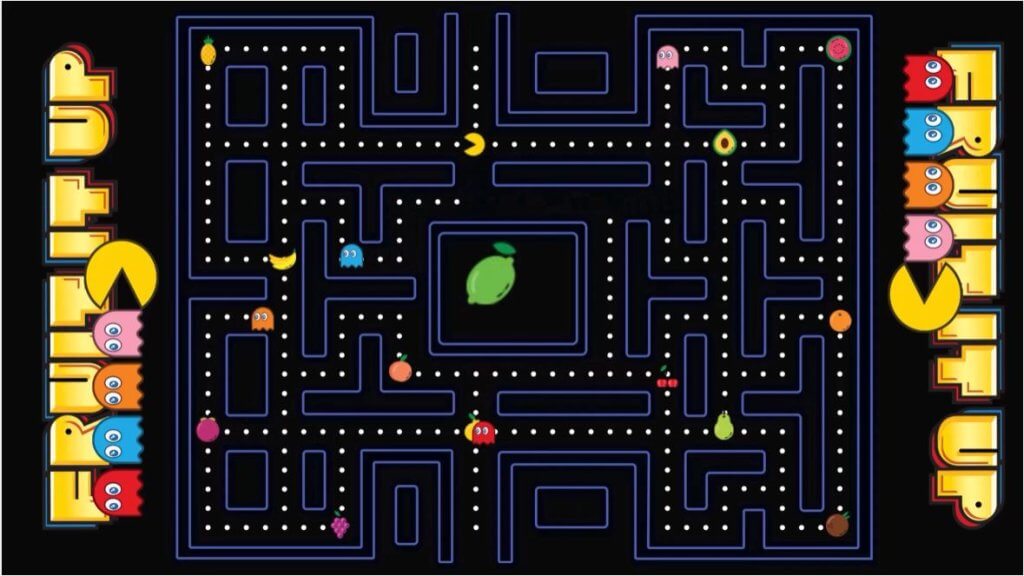
What is a Workplace Wellness Challenge?
A workplace wellness challenge is a fun digital or live program that uses behavior change principles to help employees adopt and maintain a new, healthy behavior. Modern wellness challenges gamify the process by using competitions, animation, progress tracking, badges, and incentives to help individuals and teams get healthy. A wellness challenge can focus on any health topic like exercise, healthy eating, or even water consumption. See image above for the Fruit It Up wellness challenge.
Unlike behavior change campaigns, which last between two and six weeks, a wellness challenge typically last one to two weeks. The shorter intervals remove a barrier of entry making it easier for an employee to commit to participating. Another incentive of participation is that each challenge can be a team or individual-based campaign.
Participation in the a wellness challenge is important as they help employees create healthy lifestyle habits. Worksite wellness challenge campaigns should be at the heart of every successful wellness program.
When done correctly, workplace wellness challenges help employees and their families establish healthy behaviors which reduce long-term health risks. Workplace wellness challenges are perhaps the most important part of any effective wellness program as they are what help to foster employee participation in the program.
Corporate wellness campaigns are not easy to create and require a lot of planning to be effective. To have a lasting impact on employee behaviors, they must carefully adhere to important behavior change strategies, which we will dig into in a moment.
Below is one example of an effective worksite wellness challenge. This is the Fast-Food Guide Challenge which is one of the most popular challenges that we offer at WellSteps.
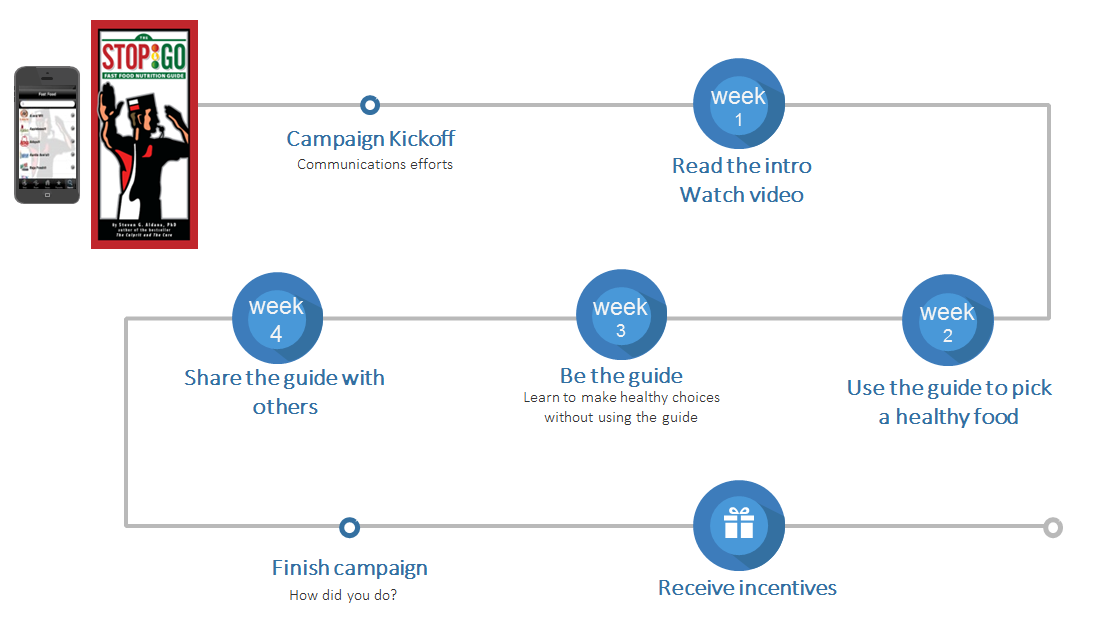
The Fast-Food Guide challenge helps employees make healthier food choices when dining out. Originally, it helped truck drivers and utility workers improve their nutrition, as they typically eat fast food almost daily.
Here is How the Fast-Food Guide Wellness Challenge Works:
Before the campaign begins every employee receives either a printed or PDF copy of the guide or they download it themselves from the free app.The campaign starts with a kickoff meeting or by having the employee watch a video that explains how the challenge works. The short- introductory video explains why it is important to eat healthily and to make healthy fast-food choices when dining out.During week one of the campaign, employees discover why good health requires good nutrition. They also uncover why it is so difficult for most of us to navigate the fast-food landscape. In week two of the challenge, employees are encouraged to use the fast-food guide in a real-world setting. They practice using this tool on their own to purchase a healthy option while dining out.
More importantly, through this week’s training, they learn why some foods are and others are not healthy. In addition to trying the tool for the first time, they learn how to look for grams of saturated fat, trans fats, and excessive sodium, while choosing whole grains, fruits, and vegetables.
In week three, participants put their new knowledge to work. They learn how to discern between healthy and not-so-healthy fast foods without using the guide. In essence, employees learn to be the guide.
They learn to internalize the principles of good nutrition so that they can go to any fast-food restaurant and still make healthier choices.
In week four, they share their fast-food guide with someone they care about. They can either give them the printed copy of the book or they can tell them where to download the app. The idea is to create a network of social support by sharing the guide. Many also feel a sense of satisfaction having been able to help someone they care about with their health.
At the end of the week, the employees will report on how they did, and the wellness challenge event will end.
How the Fast-Food Guide Wellness Challenge Concludes:
At the conclusion of the workplace wellness challenge, participants who registered and completed the challenge receive gift cards or small prizes. Traditionally, we randomly award a few employees who have finished everything.
The incentives are a powerful part of the motivation to get employees to engage in the challenge in the first place, so not everyone will automatically receive the reward.
We create and implement effective workplace wellness challenges strategically.
We design them based on solid behavior change science. The Fast-Food Guide challenge, along with all the WellSteps challenges, is based on this same sound behavior change principles. Think of them as the secret sauce of improving employee health.
The Secret Sauce of an Effective Workplace Wellness Challenge
Every WellSteps challenge is based on the behavior change principles derived from the RE-AIM framework for sustainable behavior change.
The RE-AIM behavior change model states that an effective behavior change intervention, or challenge, in this case, must have both reach and impact. The behavior change campaign must reach as many people as possible and it must impact their health behaviors.
To some, this may sound like just a lot of scientific mumbo-jumbo but this is a very well-proven methodology. To have a wide reach, a wellness program must touch every single employee in multiple ways, with multiple messages, all of which need to be delivered at the right time. Effective reach is nothing more than effective marketing.
The best wellness challenges in the world are worthless if your program does not have effective reach. Here is one of our most popular blogs ever. It includes the complete guide to employee wellness program engagement. It is the model we use to get maximum reach for every campaign we offer.
How do you garner the most effective reach? You need to leverage technology to give employees every opportunity to participate either through a computer, a mobile device, or a tablet. To cover all the bases, it’s still a good idea to continue to offer the traditional paper versions for all your wellness campaigns.
The more avenues of information you offer, the greater your reach and overall employee participation.

AMSO: One of the Best Workplace Wellness Challenge Ideas
In addition to having great reach, corporate wellness challenges must also have a significant impact. To create effective challenges WellSteps uses the AMSO (Awareness, Motivation, Skills, and Opportunities) behavior change model.
However, we believe the “O” in AMSO should include more than just opportunities. For us, this part of the model includes policy changes, environmental, and social support. Rather than calling these Opportunities, we prefer to use the word “policy”.
The AMSO model guides everything that we do at WellSteps. It includes the four components that are essential to every successful wellness challenge we create. We go to great lengths to verify that each of these four components is represented in every single campaign.
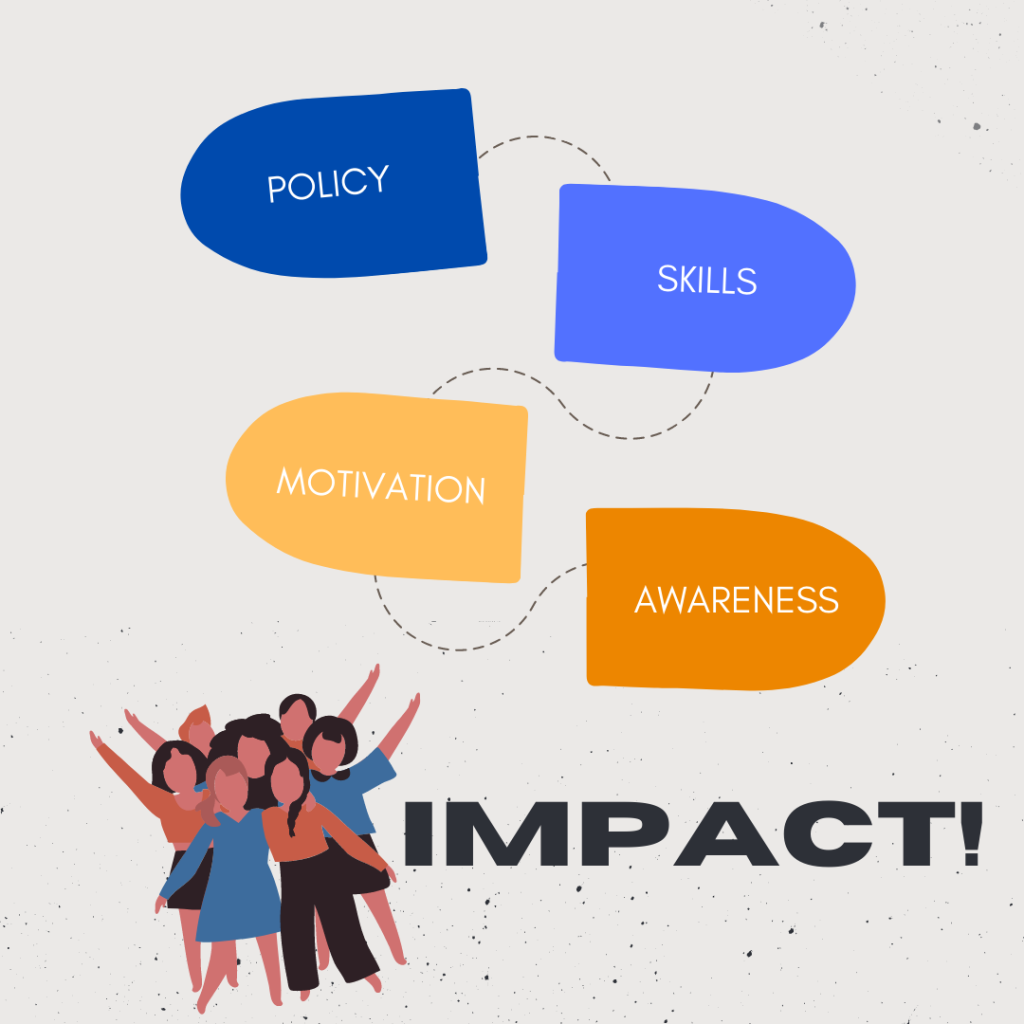
The four components are easy to understand and on their own, they are fairly basic. However, when combined, they become incredibly impactful and powerful.
Awareness and education are the “what” of behavior change. The “what” is the motivation, which is what drives us to want to change.
The skills and tools portions are the “how do I do this?” part. The policy and environment parts are a conglomeration of environmental changes, policy and environmental changes, and support from others that all work together to help us to be successful.
Which one do you think is the most powerful in helping people adopt and maintain healthy behaviors? Believe it or not, the most important part of the behavior change process is actually policy and environment.
About 40% of the success of behavior change happens when we establish a supportive environment and receive peer support from others. The least important aspects of this model are awareness and education at just 5%, yet, this is where most wellness programs spend most of their time and budgets. Let’s take a deeper look into each one of these components and how they are used to create effective employee wellness challenges.

Awareness and Education
All of us are familiar with this part of the behavior change process. This is the easy part of wellness.
Wellness programs use health risk appraisals, biometric screening, posters, flyers, videos, books, email notifications, text messages, payroll stuffers, websites, magazines, lunch and learn, guest speakers, company newsletters, blogs, and other forms of communication to create wellness awareness.
Each of these wellness activities helps individuals become aware of and educated about good health practices. They help employees understand what health risks are and whether or not we have elevated health risks or unhealthy behaviors that need to be addressed.
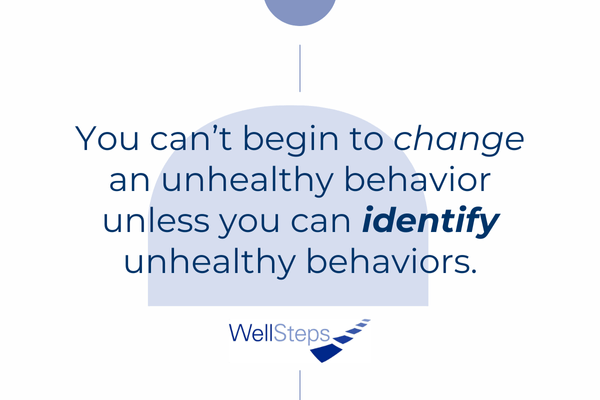
This blog is an example of how awareness and education can work. As you read and look at the images throughout the blog, you are becoming aware of and educated about the WellSteps approach to a successful wellness challenge.
In week one of the Fast-Food Guide wellness challenge described above, participants learn about the importance of making healthy nutrition choices through education. The video and content they get in week one are the education and awareness components of the challenge. It is the first step in helping people down the road to successful behavior change.
Motivation
I have already written extensively here and here about the need to have the right kinds of motivation in your workplace wellness program. Most wellness programs encourage employees to participate in a variety of health-promoting activities.
The use of incentives is just one strategy that can be used to motivate employees and encourage participation.

All of us have been able to change our behaviors at one time or another. Some of those changes have even become daily habits.
Think about the last major behavior changes you implemented in your life. What motivated you to change those behaviors? Chances are pretty good that your change of behavior did not occur because someone was offering you a monetary incentive.
We change behaviors for a variety of reasons. Peer pressure, love, the desire for something better, fear, and just wanting to improve our lives can provide ample motivation to change.
Here are three images that can motivate people to change behaviors. Not one of them is associated with a monetary incentive and yet, they have all proven that they can be very powerful agents of change.
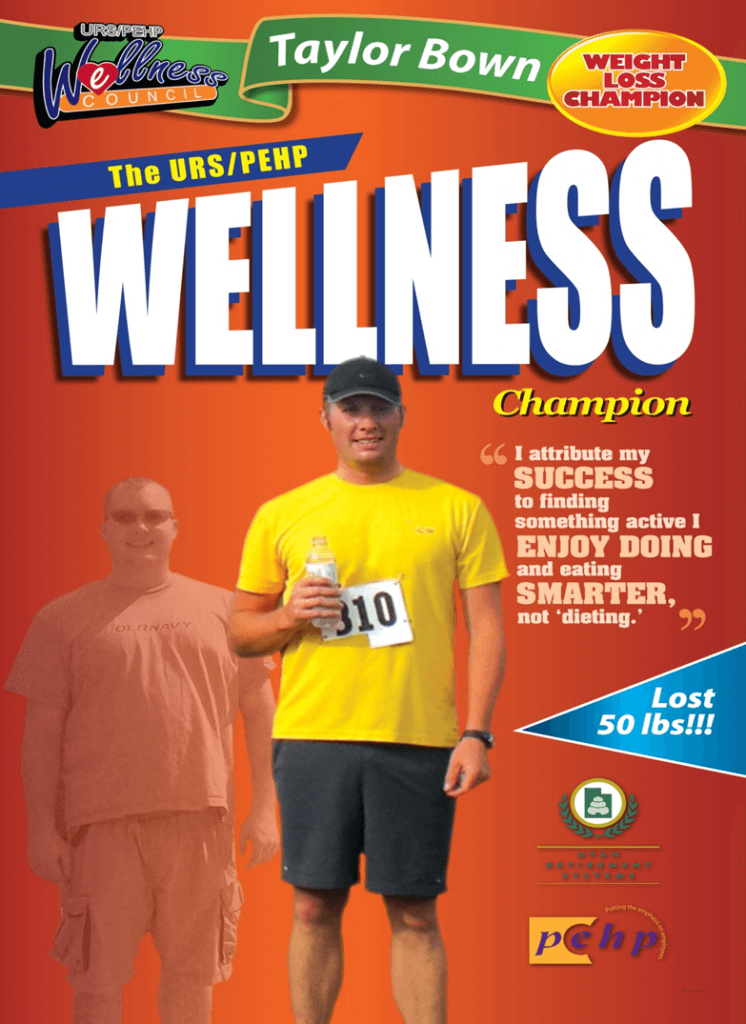

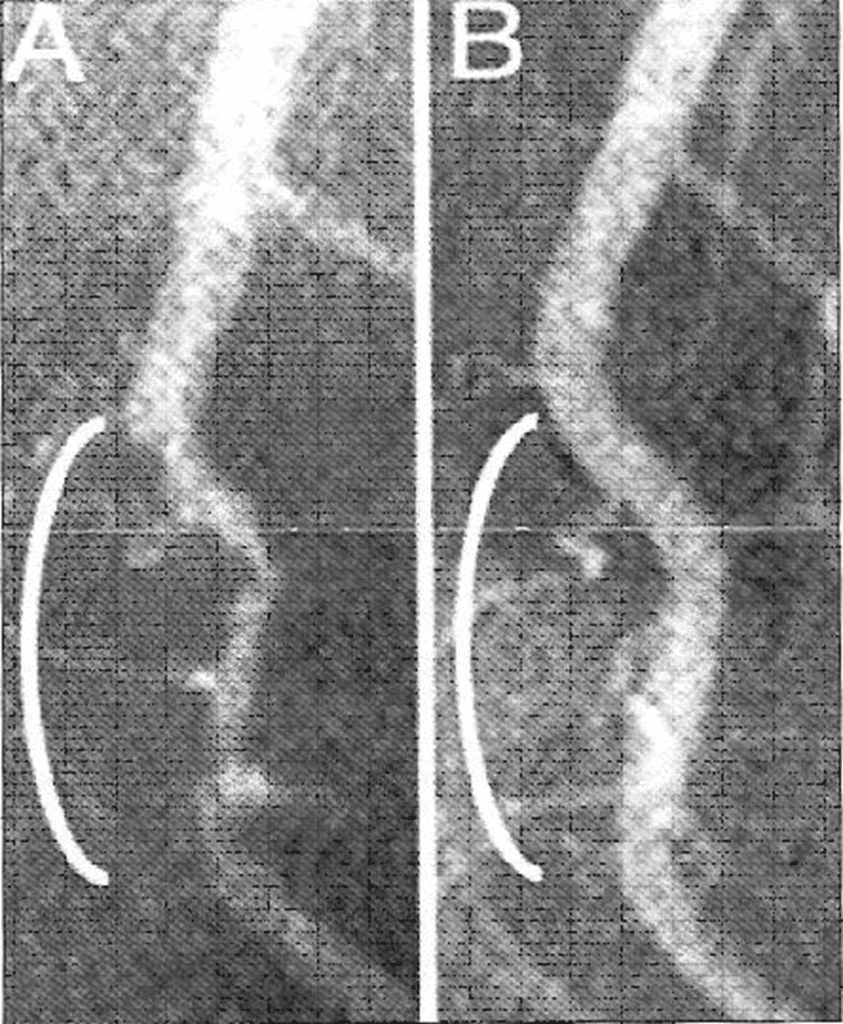
Every WellSteps challenge, including the Fast-Food Guide Challenge, uses incentives. These are small monetary or tangible rewards randomly given out to a selection of those employees who have completed all the steps of the challenge.
Believe it not, the incentive itself really is not the motivator. It is the hope of winning the incentive that motivates people to participate, yes, but not to change.
Skills and Tools
Skills and tools are the “how” of behavior change. They are one of the most important aspects of a successful wellness challenge and the one that is perhaps neglected the most.
Biometric screening is great at helping people understand their current health risks, but unless that screening helps people with the skills and tools they need to reduce their elevated health risks, the screening won’t do much to improve employee health.
Awareness and motivation are important steps to start the behavior change process but unless armed with the necessary skills and tools, failure is inevitable. As wellness programs, we need clearly define exactly how to change behavior and arm participants with the necessary skills and tools.
For example, in order to have a healthy diet, employees must know how to shop for, purchase, and prepare healthy foods. Learning to understand nutrition labels, select good-tasting produce, and cook healthy meals are all skills.

Just like, growing a garden is a skill. So is, learning how to have business meetings and still order healthy foods. Those who have healthy lifestyles have mastered most of the skills needed to be healthy and to incorporate healthy decisions into their everyday lives.
- People with a healthy lifestyle know key skills leading to healthier choices. Things like:
- Knowing how to cook vegetables in a way that makes them taste amazingly satisfying.
- Learning how to identify foods that are good for them and foods that should be avoided.
- Understanding how to bargain shop for healthy foods.
They know how to identify high-calorie foods and control portion sizes. They have learned that many times they can share a meal with someone else and still be able to eat out without overeating or overindulging.
There are skills for healthy nutrition, exercise, stress management, relaxation, conflict management, and tobacco avoidance. All of these are specific skills that must be demonstrated, learned, and mastered if behavior change is to become permanent.
For a wellness challenge to be effective, it needs to demonstrate and teach skills. But not just any skill, skills that people need to have healthy behaviors. This happens using methods like in-person training during lunch or videos employees can watch at their convenience.
The Stop and Go Fast-Food Nutrition Guide is a free tool available to anyone with a mobile device. This guide gives employees the tools and skills they need to navigate the fast-food world and make the healthiest selections possible.
In addition to skills, sometimes we need specific tools to help us. There are lots of tools that are at our disposal to help us eat right and exercise regularly. You don’t necessarily have to buy all the required tools for your employees. But, you do have to educate them about how the tools can be used and where they might find them.
For example, employees who want to walk at lunch could use a map of the local walking trails and paths to help them find the right location and distance.
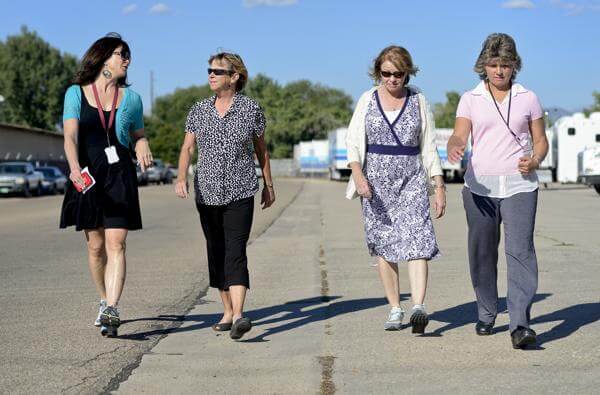
A map of the local walking trails or paths is a free tool that can help them accomplish their goal.
To be successful, a workplace wellness campaign should either provide the tools needed for employees or offer ideas. Things such as downloading a free walking trail map.
Policy, Environment, and Social Support
The last step of the behavior change process is the most important one. Not only is it about changing the culture and environment. But also, about altering policies of the worksite, creating social support, and changing the employee’s physical environment.
It’s the most important because it has the largest long-term impact on helping employees create and maintain healthy behaviors.
According to the CDC, as of 2020, about 17% of the adult population still smokes cigarettes. Yet, in California, the smoking rate is about 9%. Why is the smoking rate in California so much lower?
The main reason is that the state of California has implemented a variety of smoking policies and restrictions. In fact, far more smoking-related policies than any other state. Because of these policies, there are very few places where a person can smoke in public in California.
You cannot smoke at the beach or in a public park. In fact, your car and your own home are about the only places you can still legally smoke. Strict policies like these are not necessarily the best solution to creating a successful wellness program though. That being said, carefully crafted and supportive policies are.
Having only healthy food options in a company cafeteria or vending machine is a strong policy. No one is being forced to eat healthy foods… However, if only healthy foods are available, then employees will get into a habit of eating healthier snacks and meals at work. Once in the habit, hopefully, their tastes will change. This should cause these habits will transition into their personal lives away from the workplace.
Along with policy changes, creating the ability for social support is equally powerful. Humans are very social creatures. We depend upon each other for many things, including our attempts to be healthy. This is why spouses and significant others are perhaps the most important part of a successful behavior change effort.
It is possible to change behaviors without the help of others, but it is extremely difficult. It is far easier to be healthy when someone is joining us on this journey.

Obviously, it can cost more money to include spouses and significant others in your wellness program. But the benefits of having the support and improving the health of both is worth it!
Not to mention that, in the long run, having them both healthy means lower medical expenses for both your employee and their loved one. After all, if the goal of your wellness program is to reduce employee medical expenses, it only makes sense that you would help all plan members improve health behaviors.
It’s a great idea to allow spouses, significant others, and family members to participate in the wellness campaign alongside your employee. When possible, invite them to events and competitions, share newsletters and videos, and encourage them via email.
They should be invited to participate in as much of the wellness program as possible. The best worksite wellness programs recognize the importance of social support. They do everything they can to help employees get help from others.
In week four of the Fast-Food Guide challenge, employees are encouraged to share the guide with someone they care about. This social sharing cultivates strong social support. The AMSO behavior change model tells us that your employees will be way more successful when they have support and encouragement from those around them.
Below, the Fast-Food Guide Challenge has been re-labeled to show exactly where it includes each of the four components of the AMSO model. Each week of every challenge tries to focus on a different component. Successful wellness challenges use most, if not all, aspects of the AMSO model.
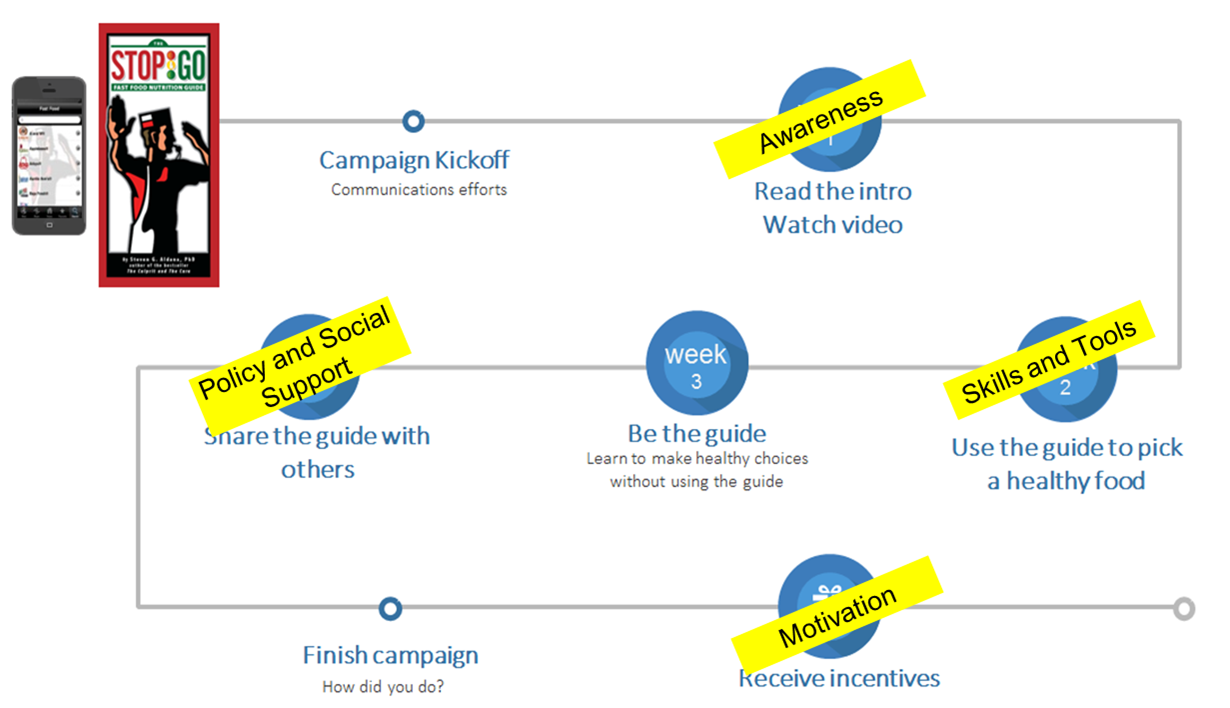
Sometimes you have to get creative to get them all included. But, you’ll discover that the result will be worth it! When employees participate in a well-designed wellness challenge, they adopt and maintain the new behaviors.
More Workplace Wellness Challenge Ideas
Here is a list of a few of the campaigns and challenges created by WellSteps. Even though they all focus on different health behaviors, every one of them uses the four components of this behavior change model.

Each one has a component of education and awareness, motivation, a set of tools and skills, and policy or environmental supports that make behavior change possible. To get started with implementing challenge ideas in your workplace, schedule a free demo call. Our team can’t wait to help you get started!
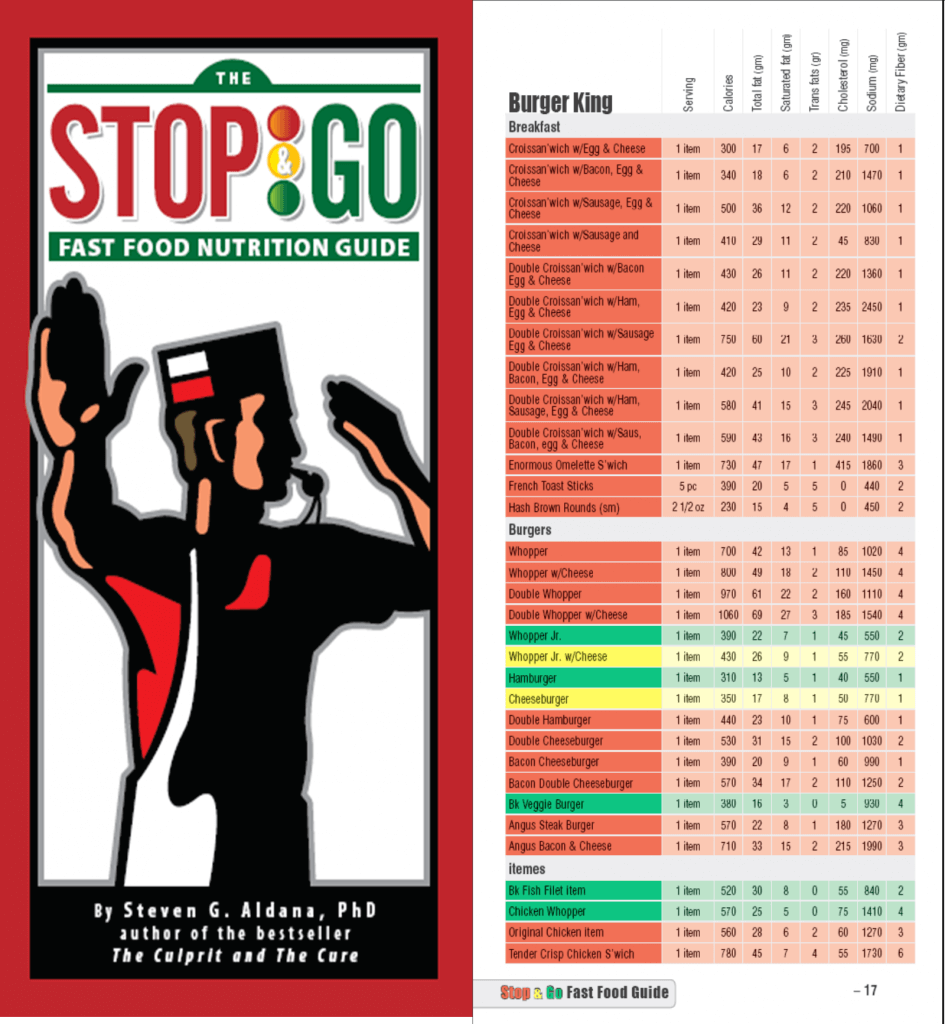
Hi Steve, almost 25 years ago Larry Chapman and I developed the first Wellness Challenge in a hospital setting. The key part of the strategy was a criteria based approached tied to incentives (not outcomes based that are much more invasive). the program continues to be used today by employers. One of the keys to it’s long-term success has been that it is structured in a manner that engages employees over an extended period of time rather than short periods. We have also found that having a 5-7 criteria as part of the program design allows for employees to focus on those areas of interest and that they are either ready to make change in or that they are already in a active or maintenance phase. This allows for flexibility and choice by the participants but also allows administrators to evaluate the program long-term for an employee population.
Comments are closed.